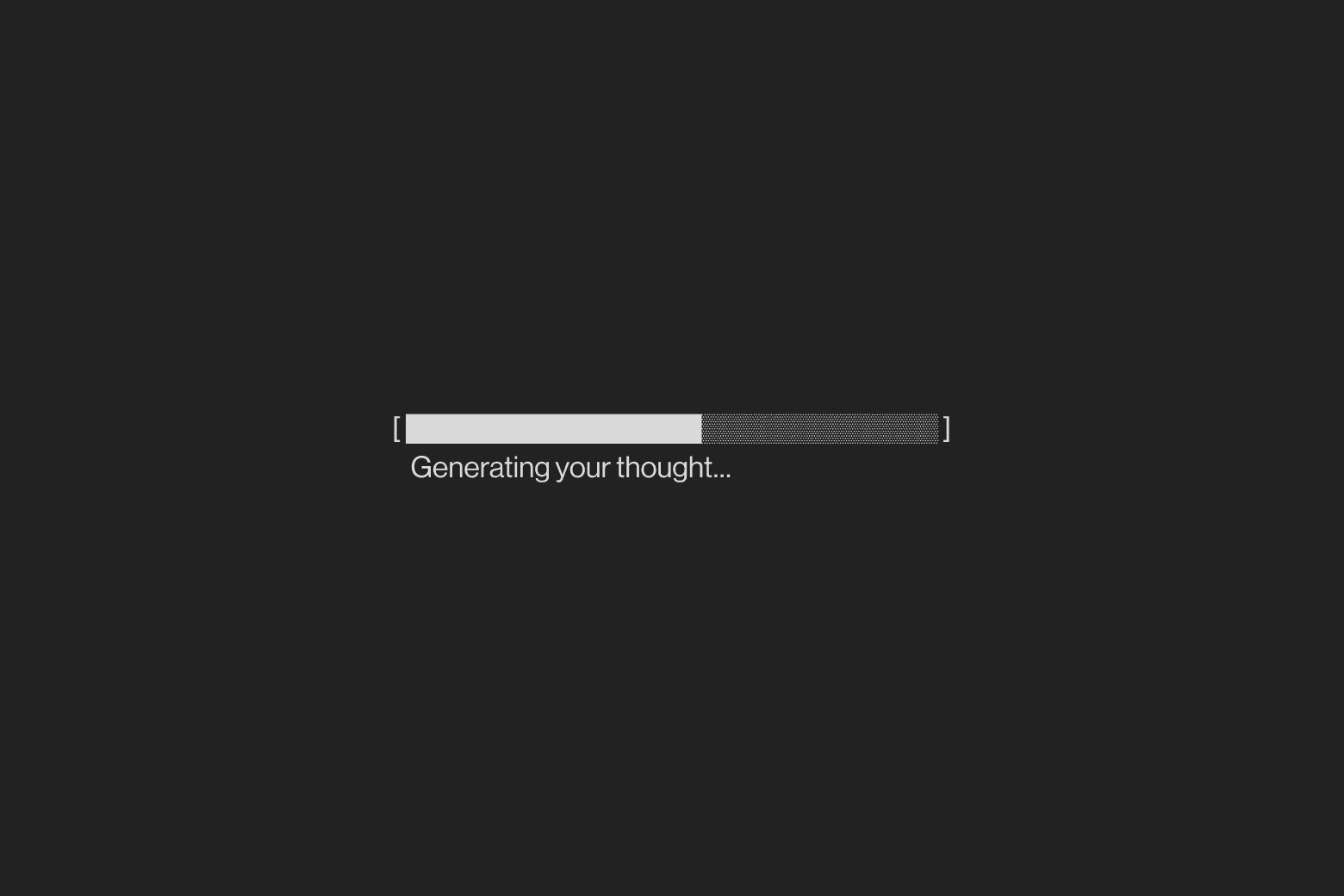Article
10/08/2025

Matthias Beckman
Creative Director
I don’t know if you’re like me, probably not. I spend way too much time scrolling, following IG accounts about AI. What’s here. What’s coming. Who blew whose socks off this time.
I couldn’t tell you why. Maybe to learn. Maybe to understand. Or maybe just to keep up.
Anyway, there I am. And another generative AI tool launches. This one promises “studio-quality results.” It proudly displays how easily brands can now generate glossy, flawless imagery. VOGUE-level campaigns. Perfect humans, perfect lighting, perfect worlds — all for the price of a subscription.
That’s when it hit me.
That funny feeling.
I’m bored.
Bored of the lifeless, stunning perfection. Bored of perfect lighting, bored of generated human beings with no humanity, bored with generative image AI.
I don’t know if you’re like me. But I think you’re going to be.
Right now branding as we know it is on its final leg. AI is going to first turn it into a simulation of meaning. Beautiful, empty, frictionless. A constant polishing of surfaces. And when everything looks perfect, nothing feels human. And then it’s over.
But I’m not against AI. I think it can help solve some of our most wicked problems:
Like helping diagnose patients and balancing the economic value of doctors and caregivers.
Or helping farmers predict crop failure and optimize water use in a warming climate.
Supporting teachers with tailored lesson plans for neurodivergent students, making education into something truly personal.
Making legal advice accessible to those who can’t afford a lawyer, and leveling a field that’s never been level.
Detecting misinformation at scale – not to censor, but to clarify.
Or creating entirely new materials, not by trial and error, but by scanning millions of chemical combinations in minutes.
AI doesn’t have a future. It has many.
It’s what we make of it that matters.
It’s a technological shift. Just like many before. With each new advancement, productivity grows as new ways replace old ones. It’s happened before. As Brian Collins put it:
“Painters hated photography.
Theatre people despised the movies.
Movie executives feared television.
Typographers mocked the Macintosh.
But eventually, with the appearance of every new technology, each original discipline was transfigured into something more interesting, more complex and (almost always) for the better.”
So for creatives, this isn’t a crisis. But it is a reset.
For years we were taught that coherence equals trust.
Same tone. Same color. Same message.
And it used to be expensive to achieve that level of finish. That made it rare, and that made it valuable and effective. That was the craft. But new tech changes the craft.
Professor Scott Galloway calls this the ”death of brand”. Design, distribution, and storytelling are now accessible. What once cost millions in funds, and months in time, now takes a subscription and a prompt.
And when anyone can look premium, looking premium stops working. And what is going to separate is not polish alone, it’s proof. It’s not how something looks. It’s what it does.
But make no mistake: the world still needs our imagination. More than ever. AI will take care of the content. It will produce faster, cleaner, cheaper. It will flood, optimize and flood the feeds again.
But imagination remains ours. The ability to see what is not here yet and make it real.
The future will not belong to those who automate creation, but to those who design direction. The ones who use new tools to reimagine what comes next, not to replicate the present.
From crafting imagery to cultivating impact.
From using culture to participating in it.
From being aligned to being alive.
AI can record. It can remix, repeat, refine. It can imitate style, simulate choice, optimize what once worked.
It does not know what hurts.
What feels off. What is missing.
What should not work, but somehow does.
That is human. Intuition. Taste. Instinct.
A hand that hesitates, then moves anyway.
Mistakes and flaws turned into something beautiful.
So no, don’t remix. Invent.
Refuse to feel hopeless.
This is not the end of creativity.
It is the test of it.
Oh, and also:







